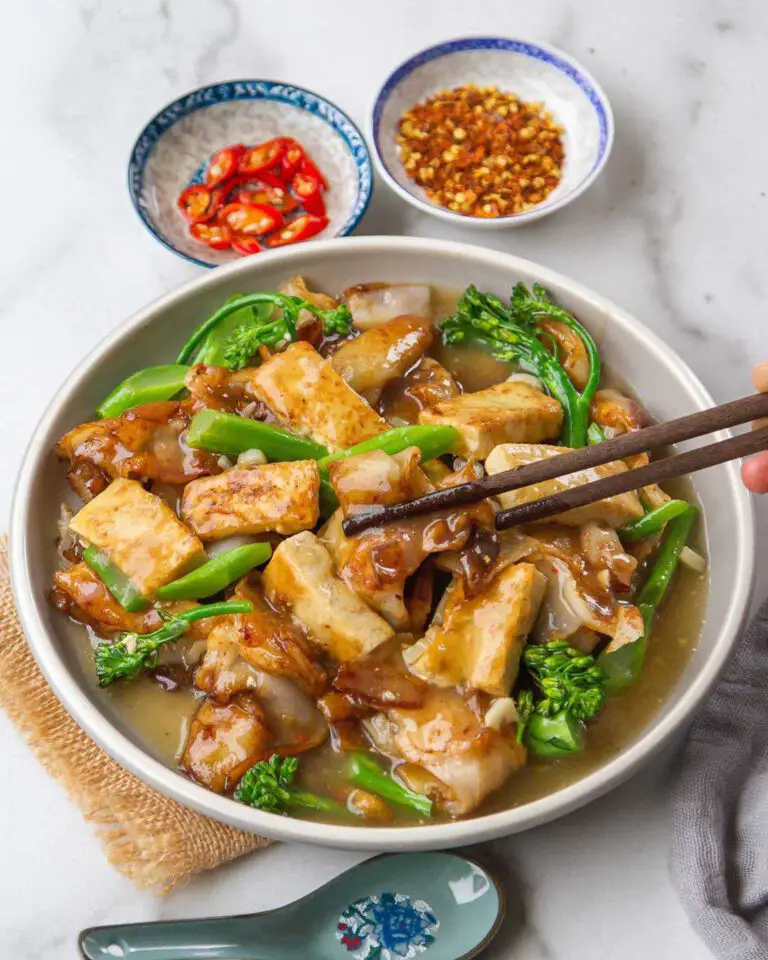

She elevates common street food, like the omelet, to a world-class gourmet delight, turning a common player into an MVP. Jay Fai’s contribution to Thai food is evident. If you are prepared to spend a lot more, try rad na with Mexican abalone at the price of 10,000 baht. Popular dishes include the crab omelet, stir-fried crab with curry powder, seafood tom yum, and dried seafood tom yum sold at 700-1,000 baht. If you want to dine at Jay Fai’s ran tam sung, make sure to book or else you may end up waiting for hours. In 2018, Jay Fai was award one Michelin star which guarantees the quality of the ingredients, mastery of flavor and cooking techniques, the personality of the chef in the cuisine, value for money, and consistency.


This talk of the town “crab omelet” fast became her signature dish and big break. The egg was crunchy crispy golden on the outside contrast with the juicy white crabmeat stuffed inside. She threw in half a kilo of crabmeat into egg batter, deep frying it in hot oil, and folding the egg to cover the crabmeat completely. Jay Fai dreamed of making one-of-a-kind crab omelet. The next step is to offer something different. She then scouted for the best seafood for her delicious Thai dishes and her consumer base keeps expanding ever since. Her customers had doubts at first, but they returned after tasting it. With a huge investment, she added pricey banana prawns in Pad Thai and sold at 120 baht (normal street food in Thailand costs 40-60 baht per dish). At 35, she started a small street food stall business before opening a proper restuarant. Refusing to fail a second time, Jay Fai devoted herself to cooking with her mother. Jay Fai was a seamstress and just when she had some savings, a fire accident reduced her hard-earned wages to ash. Jay Fai came from a modest background, her mother selling noodles while her father not contributing much to the household to say the least. With this level of success, you may assume that she had been cooking from the start, but that wasn’t the case. Her cozy and humble ran tam sung has been running for 40 years. A common sight is Jay Fai wearing black goggles to protect her eyes, standing in front of the stove, and cooking skillfully. Jay Fai, aged 77, is the owner of a one-Michelin star bistro. Jay Fai (Supinya Junsuta): The icon of Thai street food Let me introduce you to four female chefs who represent modern Thai cuisine. Nowadays as many talented male chefs are emerging, women still maintain a strong presence in the cooking scene whether as home cooks, street food vendors, or even world-class chefs. The fact that the three siblings claim spots on the global ranking shows that Thai food is vibrant at every level. Undoubtedly, it is the number one street food for Thais. Its one-step wonder is to mix all ingredients with a mortar and pestle.

Som tam is a flavor bomb, attacking you with a sour punch, hot sensation from chili and a playful sweetness. Tom yum goong allows a larger room for spiciness and a simpler method perfect for a home-cooked dish. Massaman curry has a complicated preparation and complex yet mellow flavor profile typical of the Thai royal cuisine. These three dishes are the stars of their own tiers. According to the World’s 50 Best Food by CNN Travel 2021, Thai massaman curry took the first place, followed by tom yum goong at the eighth and som tam at the forty-sixth. Today, Thai food today is more cosmopolitan and savored all over the world. In this last episode of the series, we take a peek at the modern era of Thai food and how modern Thai women build on the culmination of centuries of Thai cuisine. We know Lady Plian, an excellent cook and author of the first Thai cookbook and founder of the Thai Red Cross, and Princess Consort Saisavali Bhiromya, one of the first food innovators and female social workers. In the second episode, our journey took us through the era of change in 1851 when Thailand embraced Western cultures and technological advances. In the first episode of the Women in Thai Cuisine series, we have learned about the ladies in the royal kitchen during the first period of Rattanakosin (1782) – Queen Sri Suriyendra whose culinary skill was celebrated in a classic poem, and Thao Thong Kip Ma, an international woman who was regarded as the Queen of Thai desserts.


 0 kommentar(er)
0 kommentar(er)
